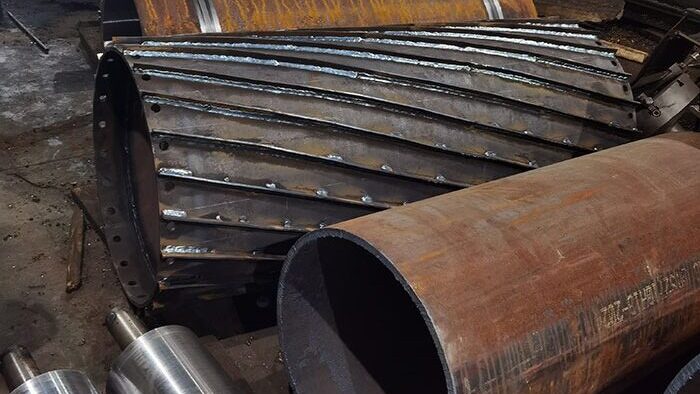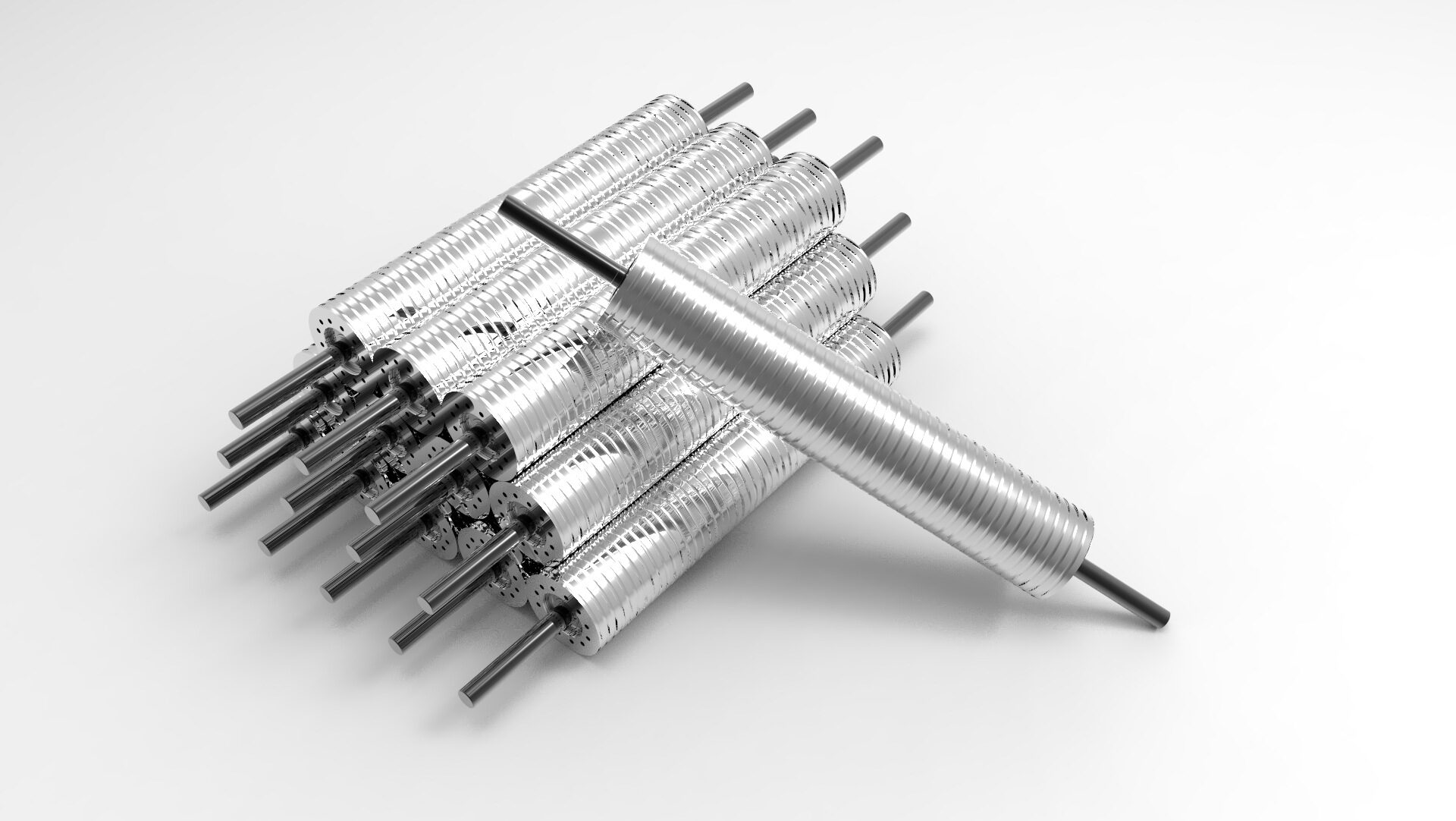Cooling Roll
Precision Temperature Control for Industrial Processes
Cooling roll is core component in industrial equipment that regulates material temperature through internal water circulation. They are widely used in film calendering, adhesive coating, and printing machinery. Traditional designs feature hollow steel rolls with rotary joints forming cooling medium channels. Turbulent heat exchange minimizes thermal deformation of processed materials.
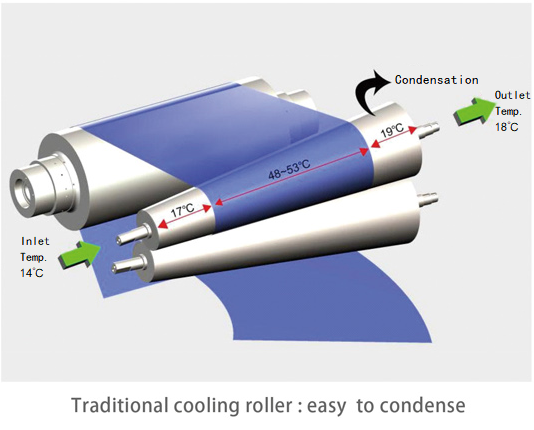
Optimized Structural Design
Hollow steel rolls remain fundamental, but innovations like dual-spiral channels and axial zonal cooling systems significantly enhance performance. S-shaped cooling paths reduce surface temperature differentials to less than 30% of conventional methods. Copper roll designs with involute-threaded interiors increase flow cross-sections by over 30%, accelerating heat transfer.

Dual-circulation systems separate cold and warm water streams via return grooves and baffles. This ensures the roll surface consistently contacts cooler water. Spiral flow guides and segmented channel designs further optimize thermal efficiency.
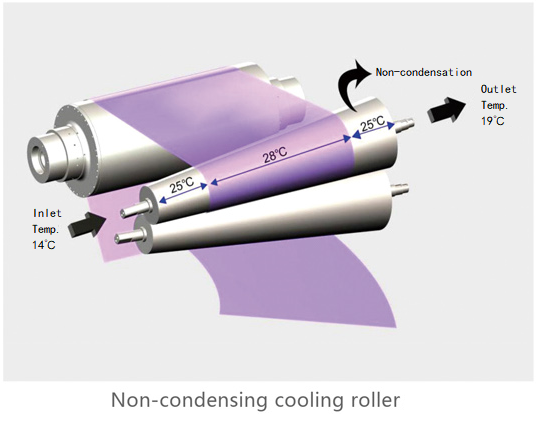
Critical Applications
- Printing Machinery:Cooling rolls maintain ink roller temperatures at 25±1℃ using water-cooled copper condensers, ensuring stable ink viscosity.
- Cast Film Production:Radial water channels enable high-speed cooling for films up to 5,000mm wide at line speeds of 250m/min.
- Hot Rolling Mills:Dual upper/lower cooling roll assemblies with arc-shaped spray systems increase cooling efficiency by 40%.
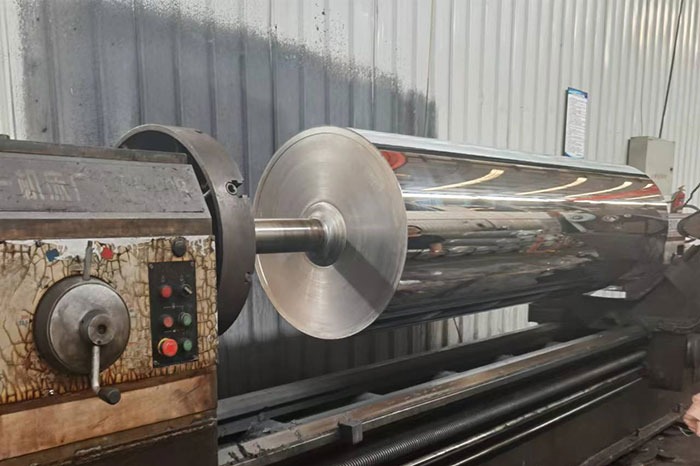
Technological Evolution
Early circumferential flow designs (pre-2020) caused surface temperature variations exceeding 5℃. Recent breakthroughs include:
- Axial Zonal Cooling (2023):Reduces temperature differentials to under 1.5℃.
- Dual-Spiral Channels (2024):Shortens cooling water path by 60% and improves heat exchange efficiency by 35%.
- Dual-Loop Isolation:Separates water streams via sealing rings, reducing defect rates in tinplate electroplating from 1.2% to 0.3%.
Condensation-Free Cooling Roll Advantage
Specialized rolls prevent surface condensation while maintaining rapid cooling. Key benefits:
- Uniform Surface Temperature:Eliminates localized overheating/cooling.
- Above-Dew-Point Operation:Prevents moisture formation that compromises product quality.
- Faster Production:Enables higher line speeds by accelerating heat dissipation.
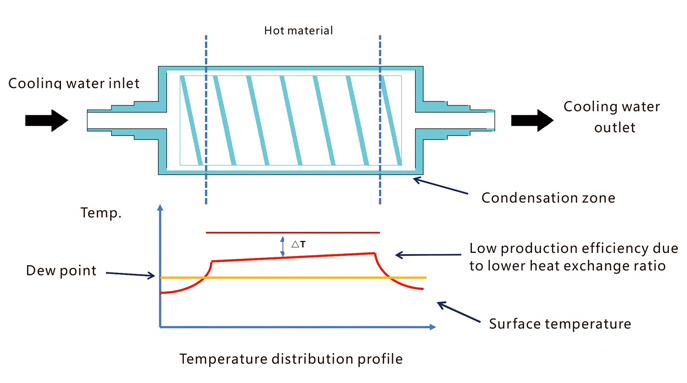
These rolls transfer heat from the central working zone toward both ends. This maximizes the temperature gradient between hot materials and the roll surface while keeping end sections slightly cooler than the center—yet safely above dew point. The result: increased throughput and reduced scrap rates.
Material & Durability
Manufactured from high-grade 45# carbon steel or alloy steel, cooling rolls withstand high nip forces and thermal stress. Robust construction prevents deformation during high-pressure industrial operations.